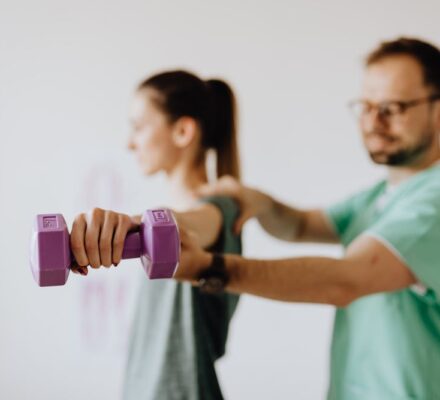Craniosacral therapy can aid athletes in preventing and recovering from injuries. By optimizing body function, craniosacral therapy enables athletes to achieve peak performance without injury. Misaligned joints, particularly the spine, cause nerve interference, which results in common sports injuries. Our health depends on twelve cranial nerves. They manage the senses of smell, sight, hearing, and touch. They are responsible for regulating heart rate, breathing, digestion, and blood pressure. They keep us in check. Blood flow, resistance to disease, motor pattern firing, and overall health all improve when nerve interference is eliminated.
What is craniosacral therapy?
Craniosacral comes from the Latin words cranium and sacrum. The dura mater, which covers the cerebrospinal fluid and encases the central nervous system, brain, and spinal cord, connects the cranium and sacrum. The Craniosacral system consists of the cranium, sacrum, and dura mater.
A craniosacral massage is dependent on a rhythm resulting from the production and absorption of cerebrospinal fluid. This pulse creates constant, microscopic motions in the sacrum and skull and places a tremendous demand on the connective tissue inside and surrounding the Craniosacral system.
In what ways does craniosacral therapy benefit athletes?
In addition to greater flexibility, speed, agility, and strength during a sports competition, patients of craniosacral therapy have claimed the following additional benefits:
Extending Motion Range
Flexibility and agility are two qualities that allow the body to move spontaneously and with ease. Stretching and expanding range of motion prevent athletes from the detrimental effects of tight muscles. Craniosacral Therapy from the best outdoor masseuse san rafael has to offer can help the body achieve this outcome. Craniosacral Therapy can relieve tension in the back and neck, hence boosting general comfort and the ability to move without resistance.
Increasing Healing Rate
When an athlete’s cranial-sacral system is dysfunctional, he or she is, unfortunately, more prone to muscle strain and inflammation. Muscle tension hinders agility, whereas muscle stress and slow inflammation recuperation (muscle stress and inflammation).
Increasing Performance
It is well known that craniosacral therapy enhances lung function. Enhanced pulmonary function improves blood oxygen levels, energy, and consistent performance. Athletics are physically demanding, and strained respiration is typical. Improved lung function enables proper air inhalation and exhalation. This makes it simpler to control your breathing and prevent shortness of breath throughout a game or practice.
How does craniosacral therapy help in sports injuries?
The central nervous system’s membranes and fluids are strained due to sports injuries. This can, over time, cause the craniosacral system to accumulate stresses that limit the body’s natural ability to function. Craniosacral therapy and a deep tissue therapy in san rafael restores the optimal and balanced state of the soft tissues around the brain and spinal cord, hence allowing the body to heal and alleviate pain and suffering.
Conclusion
Suppose you are an athlete, an aspiring athlete, or someone who occasionally engages in sports activities. In this instance, craniosacral therapy can help you reach optimal performance by reducing pain, accelerating injury recovery, and boosting overall performance. Athletes of all levels should not wait until after an injury to see a Craniosacral Therapist, similar to how people get a flu shot at the beginning of the year to prevent getting sick. It has been established that Craniosacral Therapy is a fantastic resource for injury rehabilitation and recovery, but it is an even more effective resource for injury prevention.




